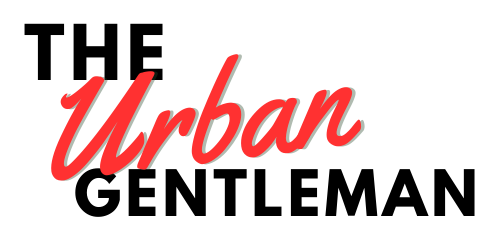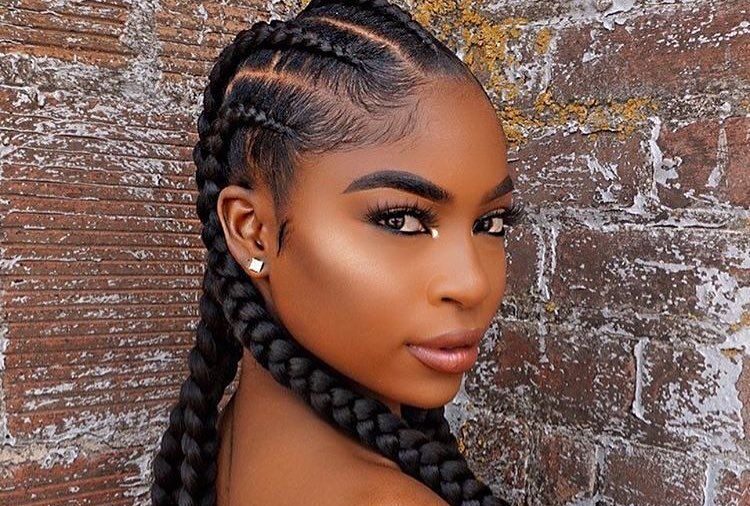There are many types of hairstyles that people, as well as models, follow, but one of them always has a special place in everyone’s hearts, and those are braids. Braids hold a special place in hairstyling due to their versatility, cultural significance, and protective nature. Among various braiding techniques, feed-in-braids is a unique technique.
These braids involve weaving synthetic or natural hair extensions into your own hair in a gradual manner, creating a seamless and less tension-filled appearance compared to the traditional braiding technique. It showcases an illusion of naturally growing hair but is used as a protective style, allowing the hair to rest and grow.
So, if you are someone who doesn’t know much about this technique or is completely unaware of this technique, then this article is perfect for you. In this article, I’ll tell you everything you need to know about feed-in-braiding.
Let’s get started!
What are the Steps to Achieve Stunning Feed-In-Braids?
- Preparation: You have to start the whole process with clean and detangled hair. Use a gentle sulfate-free shampoo and clean it properly. You can even apply a leave-in conditioner or moisturizer to keep your hair hydrated.
- Parting: The second step consists of parting your hair according to the desired braid pattern. You can create straight lines, curves, and other intricate designs.
- Adding Hair Extensions: Cut the hair extensions into the desired lengths, and for this, you can use either human hair or synthetic hair. You can even experiment with different colors if you want your braids to be unique. Then, take a small section of your natural hair at the beginning of the part and attach an extension. This section will act as your “base” or anchor.

Then, braid a few stitches with only the extension hair, which will create the foundation of the braid. You can easily add more sections of your natural hair to the braid as you slowly move forward.
As you move down, continue feeling in the extension hair with each stitch, which will create a seamless blend between your natural hair and the extensions.
- Braiding Technique: In this technique of braiding, you have to use an underhand technique while braiding, and don’t forget to keep the braid close to the scalp. As you add more natural hair to the braid, it’ll become thicker and longer and will gradually look like a natural hair growth.
- Tension and Tightness: Make sure that the braid is tight enough to stay in place but not so tight that it causes discomfort or stress on your scalp.
- Sealing the Ends: After you reach the desired length, continue braiding with just the extension hair to seal the ends. You can even add a small rubber band to secure the end.
- Repeat the Process: Repeat the process for each section of hair that you want to braid. Voila! Now, you can create as many braids as you want.
- Styling: Once you are done with all the braids, you can style them however you want and have desired. You might wear them down, gather them into a ponytail, or create intricate updos.
What are the Pros and Cons of Feed-In-Braids?
As a consumer, we would never try something without knowing its pros and cons, and neither should you. So, here are some of the pros and cons of feed-in-braids.
Pros
- Natural Look: Feed-in-braids have a seamless appearance, blending extensions with natural hair for a more realistic look. Your family and friends might have a difficult time recognizing if it’s natural or not.
- Less Tension: When you gradually add hair extensions, it automatically reduces tension on the scalp, making them more comfortable than traditional braids.
- Hair Protection: These braids also act as a protective style, shielding natural hair from environmental impurities and other things that are harmful to your hair.
- Versatility: Another great benefit of feed-in-braids is their versatility, as they come with various styling options. From intricate designs to simple updos, you’ll witness a wide range of creativity.
- Less Breakage: One of the biggest problems for everyone these days is hair breakage. But this braid style reduces tension, and the gentle installation process minimizes hair breakage.
Cons
- Time-Consuming: If you are someone who is super-busy with their professional life and doesn’t have much time for yourself, then this is not for you. Installing feed-in-braids can be time-consuming because of its complex technique. So, think twice before starting.
- Cost: If you choose to DIY, then it won’t cost much, but if you prefer some professional to install it for you, especially the high-quality extensions, then it’ll be expensive for you.
- Initial Discomfort: If you’re going to do it for the first time, then you might experience mild discomfort during the whole installation process.
- Maintenance: Maintenance can be tough sometimes as it requires proper care to prevent tangling and to maintain the appearance.
- Tension: If you choose to do it DIY and it’s your first time, then there is a high possibility that you might not install it correctly. This will lead to the risk of scalp tension, but it’ll still be less compared to the traditional braids.
How Long Do Feed-In-Braids Last?

Another important question that you must be wanting to ask is the amount of time the feed-in-braids will last. Well, these braids typically last between two to four weeks on average, but it still depends on individual factors and maintenance. Some of the factors that determine the duration are hair type, texture, and the skill and experience of the stylist who did your braiding. Proper care, maintenance, and avoiding excessive manipulation can help extend their longevity.
So, make sure to take proper care of your braids so that you can keep them for a longer period of time.
How Should You Maintain Feed-In-Braids?
After reading the article here, you might observe that I emphasized the term ‘maintenance’ a couple of times. I did it because maintaining these braids can be tough for people, so you need to know all the things you need to follow. Let me help you with that!
- Keep the Scalp Clean: Wash your scalp gently using a damp cloth or scalp cleanser to prevent buildup between the braids. This will help you clean the scalp properly.
- Moisturize: You can apply natural oil to your scalp and braids so that you can keep them moisturized. Keeping it moisturized will prevent the scalp from getting dry and leading to irritations.
- Avoid Overwashing: If you are someone who washes their hair frequently, then don’t if you want to prevent frizz and unravel.
- Protect at Night: While sleeping, everyone is unconscious, so they have no idea how many times they turn and switch positions. This will not help you maintain your braids, so you need to wrap your braids with a silk scarf or bonnet before sleeping to prevent friction and frizz.
- Use Light Oils: Always apply light oils to the scalp to keep it moisturized, which will help you maintain the shine and prevent dryness.
- Avoid Excessive Manipulation: Prevent yourself from constantly touching or pulling the braids, which will increase the possibility of damaging them.
- Regular Maintenance: To make sure that there are no loose braids, you can go and visit your professional stylist from time to time.
Is Feed-In-Braids Similar to Box Braids?
Another most asked question is if feed-in-braids are similar to box braids. Well, those two are similar but have distinct differences. They both are protective hairstyles, but in the technique of feed-in-braids, hair extensions are used to the natural hair while braiding, leading to a gradual and natural look.
On the other hand, box braids are created using just the natural hair or extension, and it involves the hair into square sections before braiding, giving a square or boxy appearance. Feed-in-braids offer a sleeker, smoother look with less tension on the scalp and edges because of the gradual addition of hair.
Conclusion
Well, wasn’t that a comprehensive review on feed-in-braids? In this article, we discussed everything about feed-in-braids – from what it is, steps to do it, pros and cons, duration, how to maintain it, etc. We hope you got to learn everything you wanted to about these braids.
We would like to end this article by saying – adapting to new things in our life and putting ourselves out of our comfort zones is what will help us grow as a person.
Trying feed-in-braids for the first time, even though it is a long process, will definitely make you uncomfortable at first, but overcoming that situation and actually enjoying the new style will define who you are.
So, if you are someone who wants to try new things and likes to get out of your comfort zone, then this braid style is for you.





